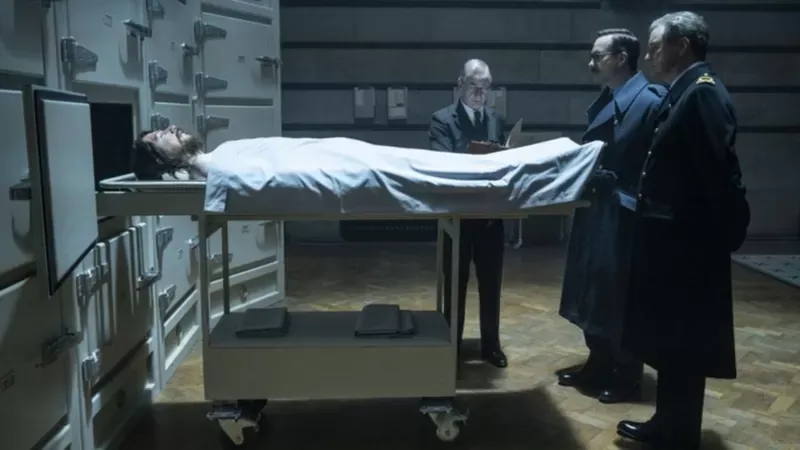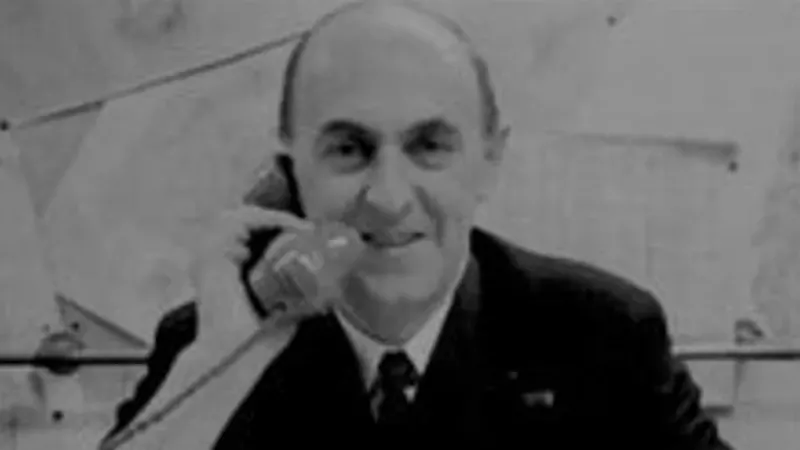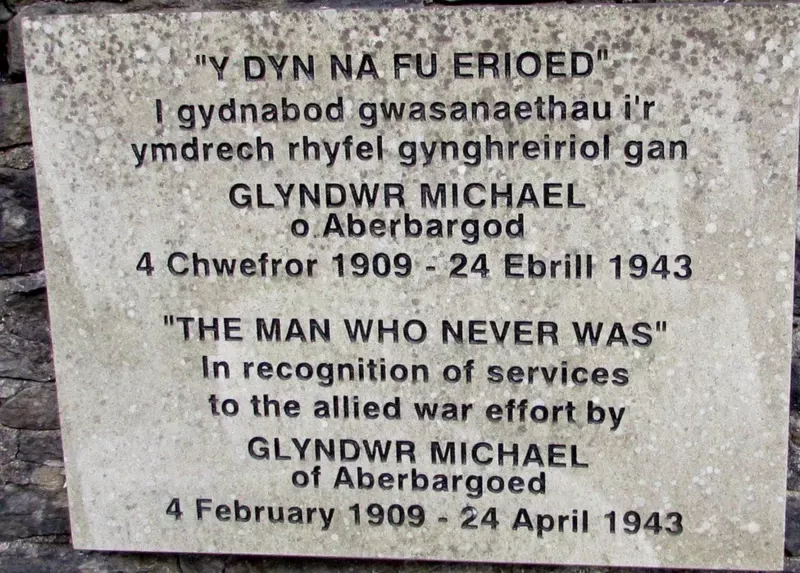“The only thing he did that was worth doing, he did after his death.”
British intelligence agent Ewen Montagu’s view of Welshman Glyndwr Michael may seem too harsh.
After all, after his death at age 34, Michael helped end World War II months earlier than it otherwise would have, saving hundreds of thousands of lives.
In April 1943 his body was used by British intelligence agents in the so-called “Operation Mincemeat”, considered the most audacious deception of the conflict.
The plan succeeded in duping the Germans into redeploying entire regiments from Sicily to Greece and the Balkans.
Historian Ben Macintyre’s book on the hoax, titled “Operation Mincemeat”, has now been made into a Warner Brothers film that has just been released in the UK. In Spanish the film is titled “The Weapon of Deception”.
“Glyndwr Michael is possibly the most unlikely hero of all of WWIIMacintyre said.
“He fled Wales for London to escape extreme poverty during the Great Depression of the 1930s. His own father committed suicide after the collapse of work in the mines.”
The historian explained that Michael’s body was found in a shed in the King’s Cross area of London and according to the forensic report he had killed himself by taking poison.
But the historian believes that it was not a suicide.
“I think Michael he may have been so hungry that he even ate rodenticide poisoned bread by mistake“, he claimed.
Straight from a James Bond novel
Whatever the cause of Glyndwr Michael’s death, his remains were turned over to Bentley Purchase Coroner.
The coroner had been alerted to the need to find a body whose injuries were not incompatible with having fallen from an airplane with a failed parachute.
Once the remains were in charge of agents Charles Cholmondeley and Ewen Montagu, the investigation began. transformation of Glyndwr Michael into Commander William Martin.

The idea of using a floating corpse to deliver false plans into enemy territory was first conceived in the 1930s by Ian Fleming, the author of the spy novels starring James Bond. (Fleming worked during World War II as an assistant to John Godfrey, director of the British Navy’s Naval Intelligence Division.)
In late 1942, the success of the Allies in their campaign in North Africa allowed them to turn their attention to other German-controlled areas in southern Europe.
Sicily was the obvious place to launch an operation, since dominance of the island meant control of shipping in the Mediterranean.
The problem was that the Sicilian option was too obvious.
the man who never was
“Everybody but a fool would know that the operation will be in Sicily,” said then-British Prime Minister Winston Churchill.
However, that didn’t stop the Allies from wanting to seize Sicily as a stepping stone to Italy. And for this they carried out a spectacular act of distraction.
Cholmondeley and Montagu went to work on the details that would make the deception more believable to the Germans.
They gave their fake officer an identity and a thorough history, beginning with the name William Martin, a common surname in the Royal Marines.
And they gave the supposed military the rank of Captain, which they considered high enough to carry secret documents, although not so important as to be known by the enemy.

They then chose everyday items that anyone would have on them. In Martin’s case, this meant keys, stamps, cigarettes, matches, a Saint Christopher medallion, theater ticket stubs, a receipt for a new shirt, a letter from his father, and even a bank overdraft notice. Lloyds.
All the documents were written with a special ink that did not run in the water.
Ewan Montagu spent months creating the fake officer’s identity. But Ben Macintyre says that the most compelling part of the puzzle was Martin’s fiancée, a young woman named Pam – actually a British intelligence officer named Jean Lesley.
“The level of detail they went into was incredible – they even dressed up Martin’s supposed uniform and underwear to make it look like worn clothing in the right size.”
“I was lucky enough to meet ‘Pam’ (Jean Lesley) when I was in my 80s, and she took me down the Thames to the point where she and ‘William’ were supposedly engaged. So believable was the story that even Montagu’s wife became convinced that she was having an affair.”
the deception
Cholmondeley and Montagu prepared the body and loaded it into a container filled with dry ice for the voyage to Scotland; the vehicle was driven by a pre-war motoring champion.
In Scotland, the submarine HMS Seraph was waiting. It took 10 days to reach the delivery point.

Meanwhile, the sub’s crew was unaware of the purpose of the mission. Once the officers lowered Martin’s body into the water, the engines were revved up so that the current would push him towards the Spanish coast.
In the early hours of April 30, 1943, a Spanish sardine fisherman found the supposedly drowned British officer near Huelva.
German military intelligence, the Abwehr, fell for it, and a copy of Martin’s letters outlining plans for an Allied operation in Greece ended up on Adolf Hitler’s desk.
At the same time, in a dark basement of the Navy building in London, men and women of British intelligence celebrated by banging on tables and jumping up and down as the message to Hitler was intercepted by Enigma codebreakers at the military facility in Bletchley Park.
One last Welsh connection
Macintyre said there was another Welsh connection that eventually convinced Hitler the body was genuine.
“One of the letters from Martin’s father was allegedly written from a hotel in Mold (a town in Wales),” he said.

“When I was researching my book, I went back to the original hotel register, and there was the name of a Mr. Martin written on the correct date of the letter. The details of the story are incredible.”
The British continued their deception with an easily intercepted telegram to the Spanish, asking for the return of Martin’s briefcase as soon as possible.
“Secret documents probably in a black briefcase. Information is required as soon as possible. You must recover immediately. Care must be taken that it does not fall into undesirable hands,” the telegram read.
Within 38 days of the Allied invasion of Sicily, on July 10, 1943, the island had been captured. Shortly afterwards Italy fell, bringing about the fall of Benito Mussolini’s regime.
Glyndwr Michael was buried in Huelva with full military honors.

Source: Elcomercio

:quality(75)/cloudfront-us-east-1.images.arcpublishing.com/elcomercio/WXLT6TGOJJE4JI2JR7TD6UKT5I.webp)

:quality(75)/cloudfront-us-east-1.images.arcpublishing.com/elcomercio/BNNM5PSDD5BORPCTJSI3DZOWKA.png)
:quality(75)/cloudfront-us-east-1.images.arcpublishing.com/elcomercio/QODBVL6FGRECJGATS3JAZSTXS4.jpg)
:quality(75)/cloudfront-us-east-1.images.arcpublishing.com/elcomercio/NEAFJ4AJ6ZGX7HS5LSP3UJSU74.jpg)

